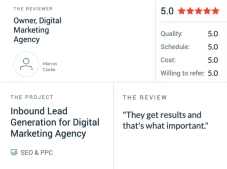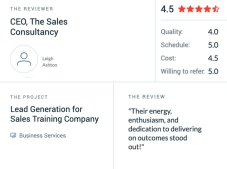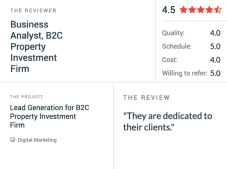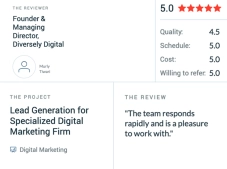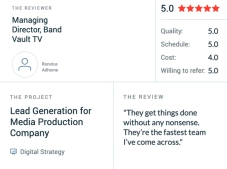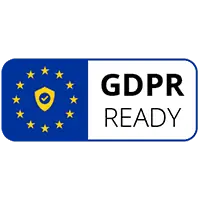An Overview Of How To Measure The Success Of Email Marketing
Email marketing is one of the most effective ways to connect with your audience and convert them into paying customers. However, just sending out emails isn’t enough. You need to measure your email marketing success to determine whether your campaigns are working or not.
Here are the best email marketing metrics for measuring email marketing success.
Open Rate
One key metric is the open rate, which measures how many recipients opened your email. This metric can provide valuable insights into the effectiveness of your email campaigns and help you optimise future emails for better results.
To calculate your open rate, divide the number of unique opens by the number of emails sent. For example, if you sent 1,000 emails and 200 were opened, your open rate would be 20%. Keep in mind that factors such as subject line, sender name, and timing can affect open rates. By testing different variables and analysing their impact on open rates, you can fine-tune your email strategy for maximum engagement.
Clickthrough Rate
Clickthrough rates (CTR) accurately measure engagement with your content. It measures the percentage of people who click on a link within an email campaign. It’s a valuable metric because it shows how engaging your content is and how interested your subscribers are in learning more about what you offer. High clickthrough rates indicate that your subscribers find value in the information you provide and are motivated to act.
Conversion Rate
Conversion rate is a metric that measures the percentage of people who take a desired action after receiving an email from you, such as making a purchase or signing up for a newsletter. By tracking conversion rates, you can see which emails drive the most sales or sign-ups and adjust your strategy accordingly.
To calculate your conversion rate, divide the number of conversions by the total number of emails sent and multiply by 100. For example, if you sent out 1,000 emails and received 50 sales from those emails, your conversion rate would be 5%.
Bounce Rate
While open and clickthrough rates are important metrics, bounce rates should not be overlooked. Bounce rate refers to the number of emails not delivered to recipients’ inboxes because the recipient’s server returned them. The higher the bounce rate, the more likely there is an issue with your email list or content.
A high bounce rate can hurt your sender’s reputation and lead to future emails being sent straight to spam folders. To measure your email marketing success using bounce rate, start by segmenting your email list into different groups based on demographics or behaviour patterns.
List Growth Rate
To get a more accurate picture of your email marketing, it’s important to consider the list growth rate. List growth rate measures how quickly or slowly your email list grows over time. It takes into account new subscribers added as well as unsubscribes or bounces.
A healthy list growth rate indicates that your email marketing efforts resonate with your audience and attract new subscribers regularly. To calculate the list growth rate, divide the number of new subscribers acquired during a specific period (such as a month) by the total number of subscribers at the beginning.
Email Sharing/Forwarding Rate
Another one is tracking your email sharing and forwarding rate. This metric measures the number of times your subscribers share or forward your emails to others. To calculate this rate, divide the number of shares or forwards by the total number of emails sent. A higher sharing and forwarding rate indicates that your content is engaging, valuable and relevant to your audience. This also means more people are exposed to your brand through word-of-mouth referrals from friends or colleagues.
By using email sharing and forwarding rates as key performance indicators for your email marketing campaigns, you can gain insight into what type of content resonates with your audience. You can then use this information to fine-tune future campaigns, improve customer engagement, drive conversions and ultimately achieve greater ROI on your email marketing investments.
Overall ROI
ROI measures the revenue generated from an investment compared to the cost of that investment. Considering costs and returns, it offers a more comprehensive view of your email marketing campaign’s effectiveness.
By using ROI as your primary metric for measuring success, you’ll clearly understand how much money you’re making versus how much you’re spending on email marketing. The beauty of using overall ROI is that it allows you to easily compare different campaigns against each other. You can see which campaigns are performing well and which ones need improvement.
Unsubscribe Rate
The unsubscribe rate is one often-overlooked metric that can highly indicate email marketing success. The unsubscribe rate measures the number of people who opt out or unsubscribe from your email list after receiving one of your emails. While it may seem counterintuitive to use this as a measure of success, it provides valuable insight into your audience’s engagement with your content.
Complaint Rate
The complaint rate is one effective metric that can help you analyse your performance. The complaint rate refers to the number of complaints from recipients who consider your emails spam or irrelevant.
To calculate the complaint rate, divide the total number of complaints by the total number of emails sent and multiply by 100. A high complaint rate indicates that your subscribers are not happy with your content or the frequency of emails. It also suggests that there may be an issue with how you obtained their email addresses or how frequently they receive communication from you.
By tracking complaint rates over time, you can identify trends and take corrective actions if necessary. You can adjust your messaging or frequency, segment your audience more effectively, or enhance permission-based strategies for collecting email addresses.
Conclusion
Email marketing has been a popular way for businesses to connect with customers for years. It’s an effective way to reach your audience, promote your brand, and generate sales. However, one of the biggest challenges of email marketing is measuring its success. We have explored several metrics that businesses can use to evaluate the success of their email marketing efforts.
Was this article helpful? Let us know in the comments.
FAQ
What are the benchmarks for email marketing?
There are several key performance indicators (KPIs) that can help you evaluate the effectiveness of your email marketing efforts. The KPI to consider is the open rate. This metric measures the percentage of recipients who opened your email. A typical open rate for a well-executed campaign is between 20% and 30%.
Is email marketing easy to measure?
In short, yes! Email marketing is one of the easiest forms of digital marketing to measure. With just a few clicks, you can access data that will allow you to analyse the effectiveness of your campaigns in real-time. Tracking open and clickthrough metrics is crucial for determining which campaigns resonate with your audience and which ones need improvement.
How do you measure your audience?
First, identify who your target audience is. Who are you trying to reach with your content? What are their interests, demographics, and behaviour patterns?
Second, use analytics tools to track engagement metrics such as page views, clickthrough rates, bounce rates, and social media shares.
Finally, engage with your audience directly by soliciting feedback through surveys or social media polls.








